
James Gillespie Blaine was an American statesman and Republican politician who represented Maine in the United States House of Representatives from 1863 to 1876, serving as Speaker of the U.S. House of Representatives from 1869 to 1875, and then in the United States Senate from 1876 to 1881.

James Abram Garfield was the 20th president of the United States, serving from March 1881 until his assassination in September 1881. A lawyer and Civil War general, Garfield served nine terms in the United States House of Representatives and is the only sitting member of the House to be elected president. Before his candidacy for the presidency, he had been elected to the U.S. Senate by the Ohio General Assembly—a position he declined when he became president-elect.

The 1884 United States presidential election was the 25th quadrennial presidential election, held on Tuesday, November 4, 1884. In the election, Governor Grover Cleveland of New York defeated Republican James G. Blaine of Maine. It was set apart by unpleasant mudslinging and shameful personal allegations that eclipsed substantive issues, such as civil administration change. Cleveland was the first Democrat elected President of the United States since James Buchanan in 1856, the first to hold office since Andrew Johnson left the White House in 1869, and the last to hold office until Woodrow Wilson, who began his first term in 1913. For this reason, 1884 is a significant election in U.S. political history, marking an interruption in the era when Republicans largely controlled the presidency between Reconstruction and the Great Depression.

Custer County is a county located in the U.S. state of Oklahoma. As of the 2020 census, the population was 28,513. Its county seat is Arapaho. The county was named in honor of General George Armstrong Custer.
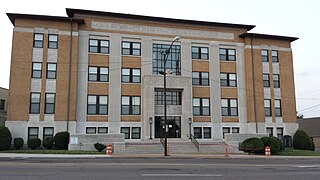
Pope County is a county in the U.S. state of Arkansas. As of the 2020 census, the population was 63,381. The county seat is Russellville. The county was formed on November 2, 1829, from a portion of Crawford County and named for John Pope, the third governor of the Arkansas Territory. Pope County was the nineteenth county formed. The county's borders changed eighteen times in the 19th century with the creation of new counties and adjustments between counties. The current boundaries were set on 8 March 1877.

The Brooks–Baxter War, also known as the Brooks–Baxter Affair, was an attempt made by failed gubernatorial candidate Joseph Brooks of the “Brindle-tail” faction of Arkansas' Republican Party to take control of the state from Elisha Baxter, who was the Republican governor. The victor in the end was the Baxter administration, also known as the "Minstrels", supported by "carpetbaggers" over the Brindle-tails supported by "scalawags" and "freedmen".

The Crédit Mobilier scandal was a two-part fraud conducted from 1864 to 1867 by the Union Pacific Railroad and the Crédit Mobilier of America construction company in the building of the eastern portion of the first transcontinental railroad. The story was broken by The New York Sun during the 1872 campaign of Ulysses S. Grant.

The 1892 Republican National Convention was held at the Industrial Exposition Building, Minneapolis, Minnesota, from June 7 to June 10, 1892. The party nominated President Benjamin Harrison for re-election on the first ballot and Whitelaw Reid of New York for vice president.
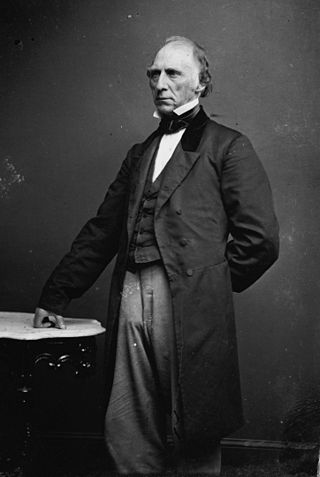
Anson Peaslee Morrill was an American politician who served as the 24th governor of Maine from 1855 to 1856 and later as the U.S. representative from Maine's 4th congressional district from 1861 to 1863.

The Royal Gorge Route Railroad is a heritage railroad based in Cañon City, Colorado. A 1950s-era train makes daily 2-hour excursion runs from the Santa Fe Depot through the Royal Gorge along a famous section of the former Denver and Rio Grande Western Railroad.
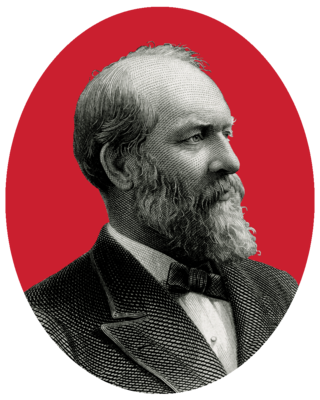
The 1880 Republican National Convention convened from June 2 to June 8, 1880, at the Interstate Exposition Building in Chicago, Illinois, United States. Delegates nominated James A. Garfield of Ohio and Chester A. Arthur of New York as the official Republican Party candidates for president and vice president in the 1880 presidential election.
The Choctaw, Oklahoma and Gulf Railroad (CO&G), known informally as the "Choctaw Route," was an American railroad in the states of Arkansas and Oklahoma.
Article X of the Texas Constitution of 1876 covers railroad companies and the creation of the Railroad Commission of Texas. The federal government later created the Interstate Commerce Commission to regulate railroads, and eight of the nine sections of Article X were repealed in 1969 as "deadwood".

Norristown was a 19th-century town and trading center on the Arkansas River and, later, an incorporated town on Norristown Mountain in Illinois Township, Pope County, Arkansas, United States. The town merged with Russellville on August 14, 1980.
Asa Peter Hosmer Robinson (1822–1898) was the founder of Conway, Arkansas.
Colonel Ephraim Blaine (1741–1804) was an early Pennsylvania settler who served as commissary-general for the middle district of the Continental Army under General George Washington. His great-grandson was Speaker of the House and 1884 presidential nominee James G. Blaine.
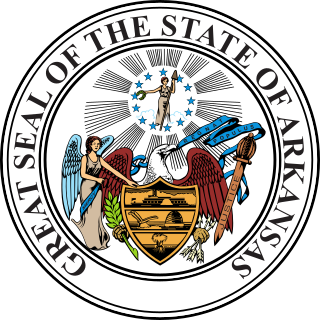
Arkansas Constitutional Amendment 91 amended the Constitution of Arkansas to raised sales tax in Arkansas from 6.0% to 6.5% for 10 years to pay for improvements to the Arkansas Highway System. It was referred by the Arkansas General Assembly to voters, and approved by voters during the November 6, 2012 election.

The Blaine faction, also known as the Blaine section, was a political organization of Republicans in the United States during the presidency of Rutherford B. Hayes who coalesced around Maine U.S. senator James G. Blaine. Forming a coalition with the conservative Stalwart wing during the era, they opposed civil service reform, as well as the conciliatory actions of the Hayes administration towards the South. Blaine himself would vote with Stalwarts in opposition to President Hayes' reform efforts, siding with Conkling's faction in December 1877 when voting against the nomination of Theodore Roosevelt Sr., to become New York Custom of Collectors.
The Kansas and Arkansas Valley Railway (“K&AV”) was owner of 170.64 miles of single track, standard gauge steam railroad line, consisting of a 164.63 mile mainline from a junction near Van Buren, Arkansas through Oklahoma to Coffeyville, Kansas, with branch lines of 6.01 miles. It began operations in 1888 and sold its property to the St. Louis, Iron Mountain and Southern Railway in 1909.
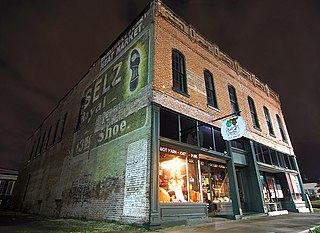
Jacob Lawson Shinn was a prosperous and influential mid to late-nineteenth-century leader in Russellville, Pope County, Arkansas. A successful merchant who established his first store in about 1852, Shin was instrumental in bringing the Little Rock and Fort Smith Railroad (LR&FS) through town and moving the county seat from Dover to Russellville. At one time the wealthiest man and largest property owner in Pope County, he donated land for a railway station and right-of-way through Russellville for the LR&FS railroad as well as property for the new courthouse, the Russellville school system, and the church that he and his wife attended. After financial setbacks that reduced his wealth drastically, Shinn continued his service to the community until he died in office months after being elected mayor of Russellville.